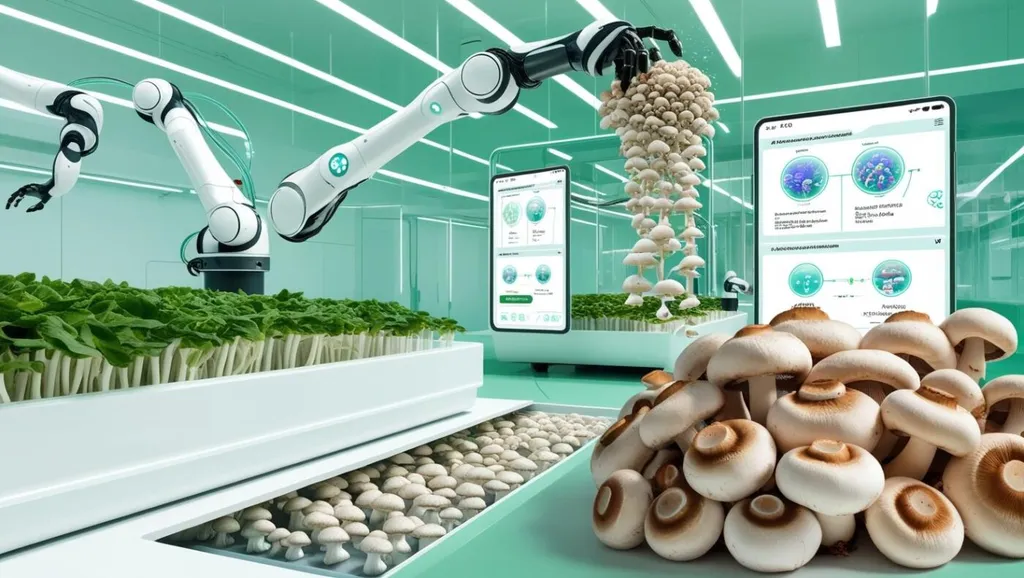In the heart of modern agriculture, where precision and efficiency reign supreme, a groundbreaking study published in *Frontiers in Plant Science* (translated as “Frontiers in Plant Science”) is set to revolutionize the way we approach shiitake mushroom harvesting. Led by Daojin Yao, this research introduces a novel method for automating the delicate process of picking shiitake mushrooms, addressing long-standing challenges in the industry.
The study, titled “Research on the method of shiitake mushroom picking robot based on CSO-ASTGCN human action prediction network,” delves into the complexities of automating mushroom picking. Traditional manual methods are not only labor-intensive but also inefficient, particularly for large-scale production. The biological traits of shiitake mushrooms pose significant hurdles in target recognition, path planning, and precision, making automation a daunting task.
To overcome these challenges, Yao and his team propose the Chaos-Optimized Adaptive Spatiotemporal Graph Convolutional Network (CSO-ASTGCN). This innovative model integrates three core modules: the Adaptive Spatial Feature Graph Convolution Module (ASF-GCN), the Dynamic Temporal Feature Graph Convolution Module (DT-GCN), and Chaos Search Optimization (CSO). The ASF-GCN dynamically models joint correlations, such as the coupling between the wrist and fingers during grasping, while the DT-GCN captures multi-scale temporal dependencies. The CSO globally optimizes hyperparameters, avoiding the local optima common in traditional optimization methods.
“The CSO-ASTGCN model is a game-changer,” says Yao. “It not only enhances the precision of human motion prediction but also significantly improves the efficiency and safety of mushroom picking.”
The research also introduces a flexible control system that fuses CSO-ASTGCN motion prediction with GRCNN grasp pose estimation. This system optimizes grasping paths and operational forces, making the picking process more efficient and less damaging to the mushrooms.
Experiments conducted on the CMU and 3DPW datasets demonstrated the model’s superiority, reducing the Mean Per-Joint Position Error (MPJPE) by 15.2% and 12.7%, respectively, compared to other methods like STSGCN and Transformers. The human-robot collaborative system boosted picking efficiency by 31% and reduced mushroom damage by 26% relative to manual operations.
“This research has profound implications for the agricultural sector,” Yao explains. “By automating the picking process, we can significantly reduce labor costs and increase production efficiency, making large-scale mushroom farming more viable and sustainable.”
The study’s findings are not just a step forward in agricultural technology but also a beacon of hope for the energy sector. As the world grapples with the challenges of climate change and the need for sustainable food sources, innovations like the CSO-ASTGCN model offer a glimpse into a future where technology and agriculture coexist harmoniously.
“Our goal is to create a seamless integration of human and robotic efforts, ensuring that the benefits of automation are fully realized without compromising the quality of the produce,” Yao concludes.
As we stand on the brink of a new era in agricultural technology, this research serves as a testament to the power of innovation and the potential it holds for shaping the future of food production. With the publication of this study in *Frontiers in Plant Science*, the stage is set for a revolution in the way we approach agricultural automation, promising a future where efficiency, precision, and sustainability go hand in hand.

